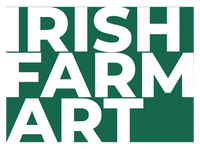- 2 days ago
Review: Rembrandt Soft Pastels – General Selection Set of 15 Half Sticks
If you'd like to check my full video unboxing review and drawing exercise please click on the link below:

Soft pastels have a special place in the art world—they’re expressive, vibrant, and perfect for everything from quick sketches to fine-art pieces. Among the many brands available today, Rembrandt Soft Pastels are often recommended for their reliability and balanced texture.
In this review, we take a detailed look at the Rembrandt Soft Pastels General Selection Set of 15 Half-Length Sticks, covering packaging, features, colour range, performance, pros and cons, and whether this compact set is worth the purchase.
Packaging & First Impressions
The set arrives in a sturdy, well-designed cardboard box featuring Rembrandt’s classic branding. Inside, the pastels are neatly arranged in a dense foam insert, each with their own slot that protects them from impact and reduces breakage—a thoughtful detail, given how fragile soft pastels can be.
The half-stick format may appear small at first, but it’s actually a major advantage for artists who want more colours in a compact, affordable set. These smaller sticks are perfect for testing out the brand, travelling, or working en plein air without carrying a heavy kit.
The overall presentation is clean, protective, and practical—ideal for both beginners and experienced pastelists.
Features & Build Quality
Rembrandt soft pastels are known for their medium-soft formulation. This unique balance makes them firm enough for controlled strokes yet soft enough to blend smoothly.
Key Features
Medium softness: Easier to control than very soft brands like Schmincke, but still smooth and blendable.
Pigment-rich: Rembrandt uses high-quality pigments with minimal binders, resulting in clean, vibrant colour.
Durable construction: The sticks resist snapping better than extra-soft pastels.
Paper labels: Each half stick includes a paper wrapper labeled with its pigment number. While useful, many artists end up removing them for more surface area.
You can use these pastels for everything from quick tonal sketches to layered, detailed artwork. They perform well on both textured pastel papers and sanded surfaces.
Colour Selection in the 15-Piece General Set
A highlight of this set is its carefully curated colour palette. With only 15 half sticks, you still get a remarkably versatile range suitable for landscapes, portraits, and general sketching.
What’s Included
Warm and cool versions of each primary colour
Earthy neutrals and browns
Mid-tones ideal for blending transitions
A crisp white and a deep black
Natural, muted hues that help balance the brighter tones
This selection feels intentional—it avoids the overly neon, unrealistic colours found in some beginner kits and leans toward a more refined, naturalistic palette.
You can achieve a surprising range of colour mixes through layering, and the set supports both high-contrast and subtle, atmospheric work.
Performance: How These Pastels Feel and Draw
When applied to textured paper, Rembrandt pastels offer smooth, predictable coverage. Their medium-soft formula allows for multiple layers without clogging the paper or creating excessive dust.
Blending
They blend beautifully with fingers, sponges, blending stumps, or simply by layering colours on top of each other. The pigment responds well without turning muddy.
Layering
On sanded papers like Pastelmat or UArt, you can expect around 5–10 layers before saturation—impressive for mid-soft pastels.
Detailing
The half-stick format gives plenty of sharp edges to start with, though these round off over time, which is normal. Combined with Rembrandt’s firmness, the pastels are capable of surprisingly fine strokes.
Overall, the performance is smooth, reliable, and suitable for beginners as well as experienced artists.

Pros & Cons
✔ Pros
Excellent pigment quality
Medium-soft formula is beginner-friendly
Versatile colour selection
Durable enough to resist crumbling
Foam packaging protects sticks during travel
Half sticks offer more colours at a lower cost
Great for plein-air work and compact kits
✘ Cons
Only 15 colours—serious artists may want to expand quickly
Half sticks may feel small to those used to full-length pastels
Labels can get in the way and need removing
Not as buttery-soft as premium brands like Sennelier
Lacks specialized skin tones for portrait work
Who Is This Set Best For?
This set is a perfect match for:
Beginners wanting to try a high-quality brand without a big investment
Students who need a reliable set for class or workshops
Sketchers and plein-air artists looking for a lightweight, travel-friendly kit
Intermediate artists wanting a starter palette to expand upon
If you’re a professional pastel artist who loves ultra-soft textures, this set may not replace your top-tier brands, but it’s still a fantastic addition for sketching and underpainting.
Final Verdict
The Rembrandt Soft Pastels – 15 Half Stick General Selection is a small but exceptionally well-designed set. It offers professional-quality performance, a balanced colour range, and the versatility needed for a wide variety of subjects.
Whether you’re just starting your pastel journey or need a reliable compact set for on-the-go work, this collection is absolutely worth considering.








